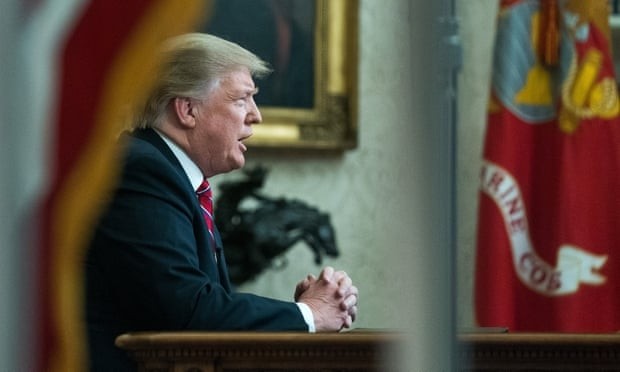Instead of posting short announcements on Twitter, or briefly responding to the press as usual, the US President chose to deliver a televised speech, broadcast directly from the Oval Office at the White House on the morning of January 9 (Vietnamese time), to talk about the issue of border security. In a near 10-minute speech, President Trump asked the US Congress to take further actions to resolve the “border security crisis” by approving the funding for the US-Mexico border wall project, which will also end the partial government shutdown entering its third consecutive week. He used the phrase “Open Wound” to hint the emergency of the US southern border security issue, where the illegal immigration, drugs, gang violence and crime are seriously on the rise. He even recalled the horrific details of the murders which he said were related to illegal immigrants.
Earlier, the White House leader once threatened to use his national emergency rights to construct the border walls without the approval of the Congress, while stating that the partial government shutdown could last “many months and even many years”. In fact, the US President has been given great power to take action in crisis situations. Many predecessors of President Trump had used such emergency rights, with more than 20 emergency measures currently still valid and renewed annually. Meanwhile, the Immigration Law stipulates that a state of emergency can be established if the wave of foreigners entering the US exceeds beyond control. Accordingly, the US President is allowed to transfer money into military construction projects, specifically the border wall in this case. However, the US Congress also passed a bill to limit the President’s power, while maintaining flexibility to act in an emergency case. Even, legislators can end the state of emergency if both the House of Representatives and Senate vote in favour. At the moment, the Democrats and other opponents of a border wall had threatened to take legal action if President Trump issued the order.
After days of insinuating about the possibility of using the President’s power to declare a state of emergency aiming to pass the border wall project without the Congress’s approval, President Trump said he would continue to find solutions to this problem. The White House boss expressed his first goodwill by approving the adjustment of building a steel barrier instead of a solid concrete wall.
However, the Democrats still opposed, because it is not only a matter of materials to build the border wall, but the risk that the project can take a long time and cost tens of billions of dollars to complete, not just US$5 billion separate for the building of the wall. Leader of the Democratic Party in the Senate Chuck Schumer and House Speaker Nancy were the first to protest President Trump’s televised speech, stating that the current solution is to separate the government shutdown from the debate on border security. Pelosi criticised that the President’s “obsessions” caused taxpayers in the US to spend billions of dollars for an expensive and inefficient wall, a project in which President Trump has repeatedly promised that Mexico would share the costs.
The US government has been partially closed for 19 days, and optimism is declining concerning the parties reaching an agreement on the reopening of the government. Many Republican MPs are campaigning to call for protests against the separate budget bills that the Democratic Party will put forward to the House for consideration this week. Today (January 10), President Trump plans to visit the US-Mexico border area. Many experts predict that the US President will declare a state of national emergency aiming to build the border wall after the visit.
















